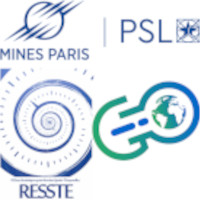Trans-Gaussian geostatistics, which consist in transforming a latent multivariate Gaussian random field to model an environmental process with non-Gaussian marginal distribution, has been proved successful in modeling key features of daily rain fields such as intermittency (i.e. dry and wet domains coexist within relatively small areas), skewed distribution of rain intensities, and the presence of well defined spatial patterns. As a result, this framework is commonly used for the spatial analysis of daily rainfall data, for instance for the interpolation of rain gauge observations, for the fusion of rain gauge and weather radar data, or for the stochastic emulation of synthetic rain fields for risks assessment.
In mountainous areas, topography-atmosphere interactions generate orographic effects that create wetter windward than leeward slopes, and wetter highlands than lowlands. Hence, mountain rainfall exhibits strong horizontal gradients of mean annual rain accumulation, but also spatially varying features such as frequency of occurrence, extreme intensities, or spatial dependencies. This spatial variability of mountain rainfall statistics breaks the hypothesis of stationarity that underlies trans-Gaussian geostatistical models, leading to a degraded performance in spatial prediction and unrealistic rainfall features in simulations.
To overcome these limitations, I propose in this study a fully non-stationary trans-Gaussian geostatistical model dedicated to the spatial analysis of daily rainfall over complex topography. This model allows not only for a non-stationary marginal distribution of daily rainfall accounting for intermittency, but also for a non-stationary covariance structure of Matérn type. A procedure is proposed to infer model parameters from rain gauge observations (i.e., point observations unevenly distributed within the study area). The model is applied to the Island of Hawai‘i where rain gradients can reach 1000 mm/year/km, amongst the strongest on Earth. Model assessment results demonstrate good skills at reproducing the spatial variability of daily rainfall occurrence, intensity distribution and spatial dependencies.
- Poster

 PDF version
PDF version

